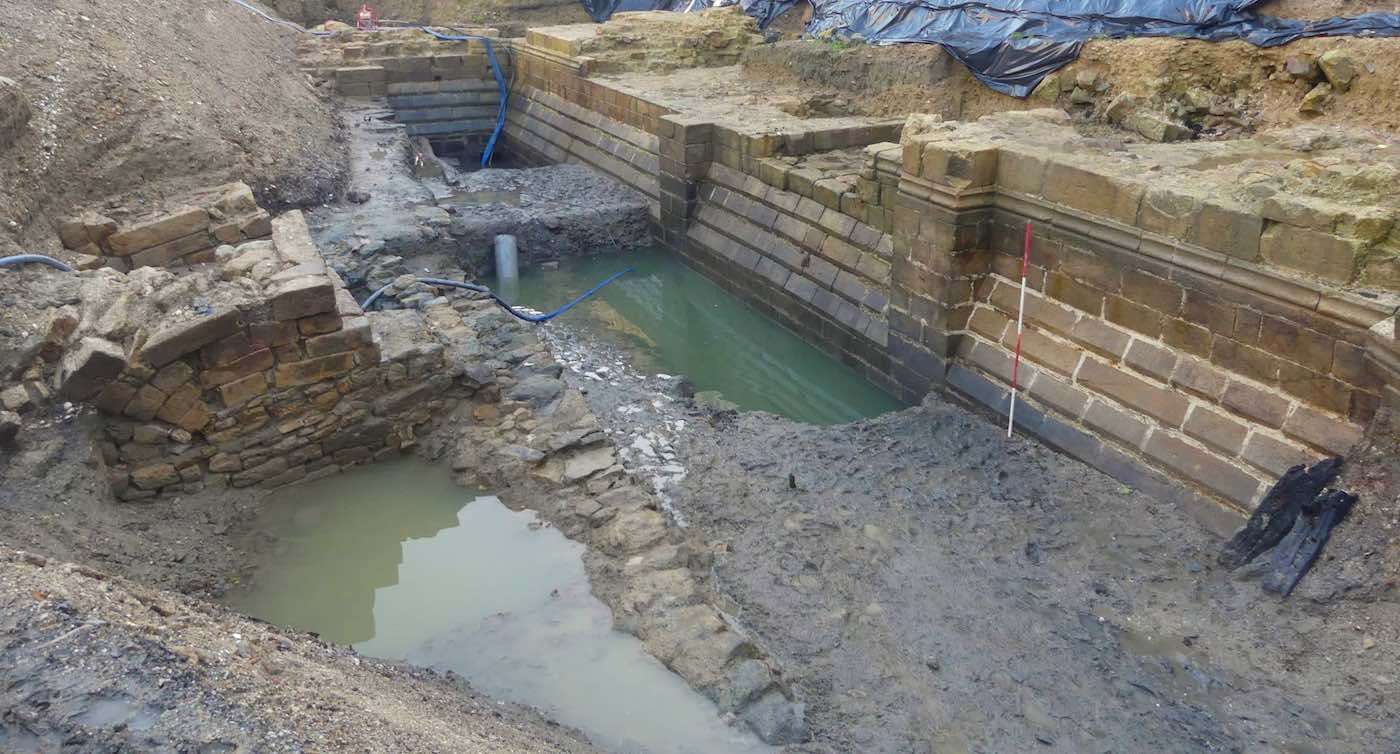The stunningly well-preserved remains of a castle have been dug up in the French city of Vannes, Brittany, at the foot of a private hotel.
The operation was carried out as part of preventive archaeology prior to the construction of the future Museum of Fine Arts of the City of Vannes, and while the owners knew that a medieval structure existed under the Hôtel Lagorce, the scope and preservation of it were a grand surprise to everyone involved.
The first phase of the project took place between February and April 2023 in the cellars and courtyard of the hotel which was originally a private mansion built at the end of the eighteenth century.
The courtyard had been built atop an embankment 13 feet deep (4 meters). Down below, archaeologists unearthed two stories of what was probably a four-story castle that measured 140 feet long and 55 feet wide overall. Connected to additional defensive elements, it would have been even larger.
Historical records all but confirm the castle was Château de l'Hermine, constructed by the Duke of Brittany in 1380 following the end of one of the many wars between French royals. It was part of a large public works program that doubled the size of the city of Vannes, but was abandoned by the Duchy in favor of Nantes in 1470, before becoming ruins in the 17th century.
The excavation was handled by Inrap, the national institute for archaeological excavations for the state of France.
A central passage connects the north gate, built into the façade on the city side, to another gate framed by two large towers that once made up a section of the city rampart overlooking the outer moat, all of which was identified on very old architectural plans of the city.
They unearthed several staircases, including a remarkably well-preserved ceremonial staircase with a decorated core, several intact steps, and a sitting window. In the skeleton of the exterior masonry at each end of the house, the archaeologists also identified a set of latrines and drainage pipes that served the upper two floors.
Also identified were the foundations of a watermill, placed "in a very original way" at the corner of the castle near a square tower. A canal brought water from the River Marle to drive the mill. The water drained to the moat downstream of the wheel through an opening in the façade, the grille of which has been preserved.
Across all the recovered masonry, the stones have been remarkably well maintained by the embrace of the wet earth, and in some places appear to have been laid recently.
The drain pipes and latrines were searched manually, but thanks to 580 years of passing time the workers had only soil and water to dig through. They also performed a deep bore into the former moat, and the two searches yielded hundreds of varied artifacts.
Cooking utensils, pots, pans, and wooden crockery, jewelry, a selection of coins, padlocks, remains of furniture like cabinets and chairs, keys, pins, clothing fragments, remains of the watermill, shoe buckles, and graffiti-covered ceramic tiles were all found.
SHARE This Amazing Discovery With Your Friends Who Love This Sort Of Thing…










Be the first to comment